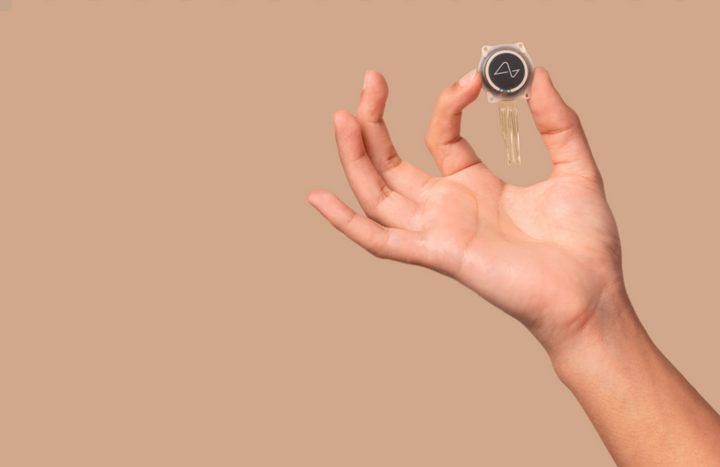Biomedical Engineering Breakthroughs: Transforming Healthcare for Tomorrow
Biomedical engineering has emerged as a dynamic field at the intersection of healthcare and technology, offering a multitude of groundbreaking discoveries and innovations that have the potential to revolutionise healthcare. From novel medical devices and implants to cutting-edge diagnostic tools and regenerative therapies, biomedical engineering is paving the way for exciting new possibilities in improving human health and well-being. In this blog, we will explore some of the most reformative breakthroughs and innovations in biomedical engineering that are shaping the future of medicine and improving the quality of life of people around the world.
Wearable Ultrasound System for Deep-Tissue Monitoring
Wearable ultrasound systems are novel medical devices that are designed to monitor deep tissues in the body without the need for bulky or invasive equipment. These systems typically consist of a small, flexible patch that is attached to the skin and a wireless transmitter that sends the data to a computer or smartphone for analysis.
One of the most promising applications of wearable ultrasound systems is for the continuous monitoring of cardiovascular health. These systems can be used to track blood pressure, heart rate and cardiac output in real-time, which can provide valuable insights into a patient's overall health. Wearable ultrasound systems can also be used to monitor other physiological parameters, such as respiratory health and muscle function.
The wearable ultrasound system includes a small and flexible control circuit that communicates wirelessly with an ultrasound transducer array. This allows the system to collect and transmit data effectively. To interpret the data and track subjects in motion, a machine learning component is employed.
The ultrasonic system-on-patch enables continuous tracking of physiological signals from deep tissues up to a depth of 164 mm. Overall, they can overcome the limitations of traditional ultrasound technology and open up new possibilities for continuous monitoring of various physiological parameters.
New Microscopy Imaging Technique: RESORT
Reversible Saturable Optical Raman Transitions, or RESORT, is a new microscopy imaging method that combines the advantages of vibrational and super-resolution fluorescence imaging. It is a laser-based technique that uses Raman scattering, a special interaction between molecules and light, to create high-resolution images of biological samples without damaging them.
With photoswitchable Raman probes, the RESORT imaging process involves labelling the specific components of the sample, which can control Raman scattering using different lasers. The sample is then placed in an optical apparatus, irradiated with specific light, and imaged using a high spatial resolution technique.
The potential applications of RESORT are extensive. It can be used to study the structure and function of proteins and other biomolecules, investigate cellular processes, diagnose & monitor diseases, and aid in the development of new drugs and therapies. Overall, RESORT represents a significant advancement in microscopy imaging, with the potential to revolutionise our understanding of biological systems.
Brain-computer interfaces (BCIs)
Brain-computer interfaces (BCIs) enable individuals to control external devices using brain signals. They have diverse applications, including assisting people with disabilities and enhancing defence capabilities. Researchers are working on BCIs that allow paralyzed individuals to communicate by spelling words on a computer screen or regaining control of their limbs. BCI-controlled robotic limbs are also being developed to provide users with a sense of touch. BCIs have the potential to augment human capabilities by enabling the control of computerised machinery through thoughts.
New BCI users go through a training process to learn how to generate signals that the BCI can understand. Machine learning algorithms help translate these signals into device commands.
BCIs are typically connected to the brain through implanted or wearable devices. Implanted BCIs are surgically attached directly to brain tissue and are suitable for individuals with severe neuromuscular disorders or physical injuries. They offer precise control by measuring signals directly from the brain. However, they carry risks such as infection and rejection. Some implanted BCIs use electrocorticography (ECoG), placing electrodes on the brain's surface to reduce risks.
To measure brain activity that can be detected on the scalp, wearable BCIs use caps with conductors. They are suitable for applications like augmented and virtual reality, gaming, and controlling industrial robots. Most wearable BCIs utilise electroencephalography (EEG) to measure the brain's electrical activity.
Researchers are also developing portable BCI methods, such as wireless EEG, to enhance mobility. These methods allow users to operate devices like smartphones while freely moving around.
Medical virtual reality
Medical virtual reality is an exciting development in the field of biomedical engineering, utilising artificial intelligence (AI) and virtual reality (VR) technologies. These technologies, commonly associated with gaming, are finding applications in medicine. AI can assist in analysing medical images like chest X-rays to identify areas of concern.
Virtual reality tools are being used to create accurate models and images of a patient's body prior to surgery. This allows doctors to practise complex procedures beforehand, reducing surgery times, minimising recovery needs and lowering the risk of post-surgical complications.
These advancements in biomedical engineering have significant implications for improving healthcare. They enable minimally invasive surgeries, enhance X-ray technology, and ensure doctors are trained using the latest virtual reality techniques. These developments are expected to have a direct impact on the lives of individuals, improving medical procedures and patient care.
Bio-engineered heart tissues
Scientists have made a significant breakthrough by demonstrating that bio-engineered heart tissues or “bio-printed patches” can effectively aid patients in their recovery from the damage caused by severe heart attacks. This pioneering technology involves the development of customised "bio-inks'' derived from a patient's own stem cells. These bio-inks are then used in the 3D printing process to create cardiac tissues that can repair the necrotic tissue resulting from heart attacks.
This breakthrough has the potential to revolutionise the treatment of heart failure, providing a new avenue for restoring heart health and reducing the burden of cardiovascular disease.
As we witness these remarkable developments in biomedical engineering, we are entering an era where science and technology converge to reshape the future of medicine, offering hope for better treatments, diagnostics and improved quality of life for individuals worldwide. The possibilities seem endless, and with each new breakthrough, we come closer to a healthier and brighter future for all.




 Industry Inscript is a subsidiary of Valiant and Company Ltd.
Industry Inscript is a subsidiary of Valiant and Company Ltd.
Comments ()